
Agile Research 101 with Brianna Boyer of AYTM
February 23, 2024
A Data Quality Discussion with Karine Pepin of The Research Heads
March 7, 2024The launch of ChatGPT, celebrated by many, opened Pandora’s box regarding artificial intelligence. Combining the rise of AI with the discussion already occurring around privacy in technology, the tech space is causing a lot of concern among people.
With this in mind, in our most recent round of research-on-research, we dove into the public’s concern levels regarding two pivotal aspects of our modern world: technology and privacy and artificial intelligence (AI).
Let’s dive into what we uncovered. Overall, we found that a majority of respondents have a high level of concern when it comes to technology and privacy. Just less than half of respondents had a similar concern level when it came to artificial intelligence.

Gender
The breakdown of results by gender on concerns about technology and privacy and artificial intelligence (AI) presents a compelling narrative of unanimity across male and female respondents. Remarkably, groups express identical levels of concern for technology, privacy, and artificial intelligence.
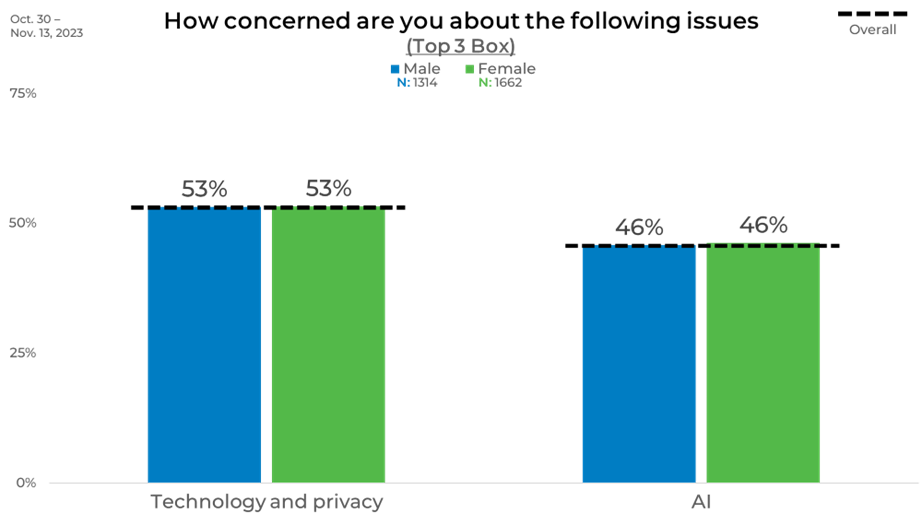
Age
The analysis of concern levels about technology, privacy, and AI across various age groups reveals a clear trend: concern increases with age. Starting with the 18-24 age group, we found that apprehension levels steadily climb as we move up age groups.
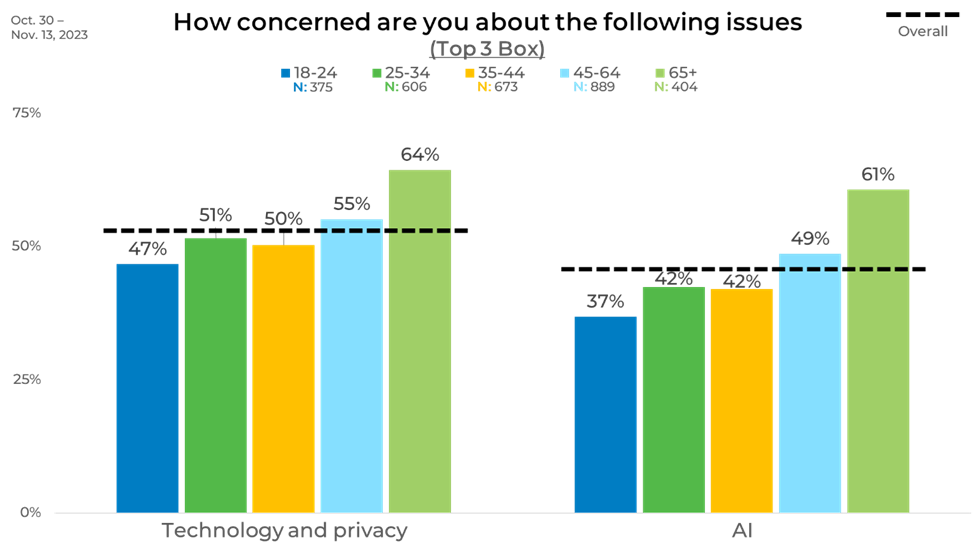
Income
When segmented by income level, concern levels about technology and privacy and AI demonstrate a dynamic between economic status and technological apprehensions. For technology and privacy, concern starts at 48% among individuals earning under $20,000 and escalates as income increases, reaching a high of 58% among those with incomes between $60,000 and $99,999. Interestingly, this concern slightly dips to 53% for individuals in the highest income bracket, those earning $100,000 or more.
Concern for AI exhibits a similar pattern, beginning at 41% for the lowest income earners and climbing with income, peaking at 52% for those in the $60,000 to $99,999 range, then slightly decreasing to 46% among the highest earners.
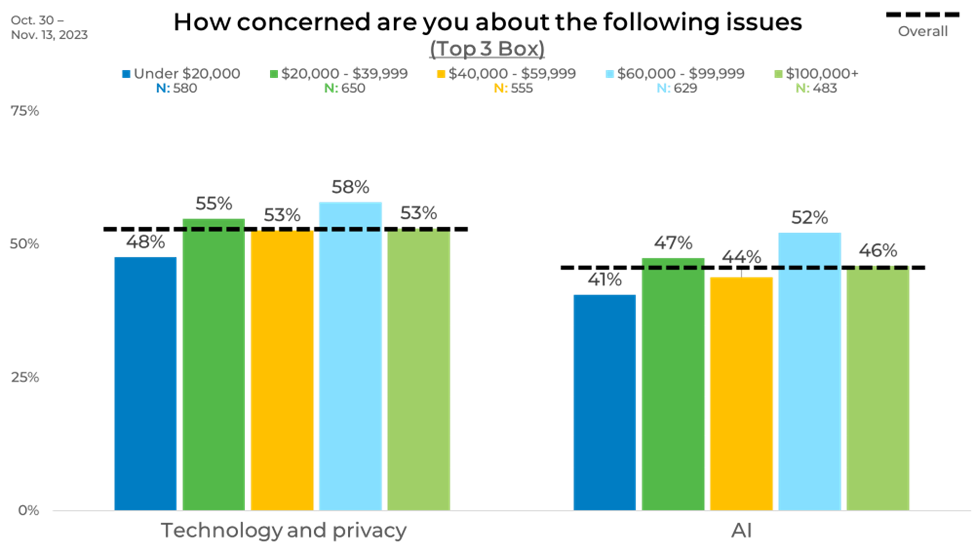
Political Affiliation
When we segment the data by political affiliation, we found that Democrats have the highest level of concern around technology and privacy concerns at 59%.
Regarding AI, Republicans and Democrats display closer levels of concern, at 48% and 50%, respectively, reflecting a bipartisan recognition of the potential challenges posed by AI.
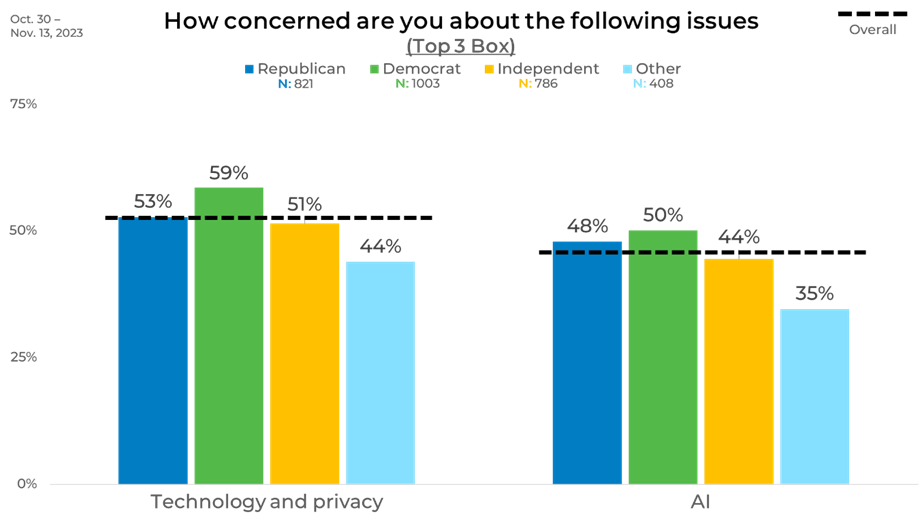
Ethnicity
There are varied levels of concern when we segment that data by ethnicity. For technology and privacy, Hispanic respondents express the highest level of concern at 57%, followed by Caucasians at 54%.
Regarding AI, Hispanic respondents again show the highest concern at 49%, with Caucasians not far behind at 47%. African-American respondents show slightly less concern at 44%, and Asian respondents express the lowest concern at 38%.
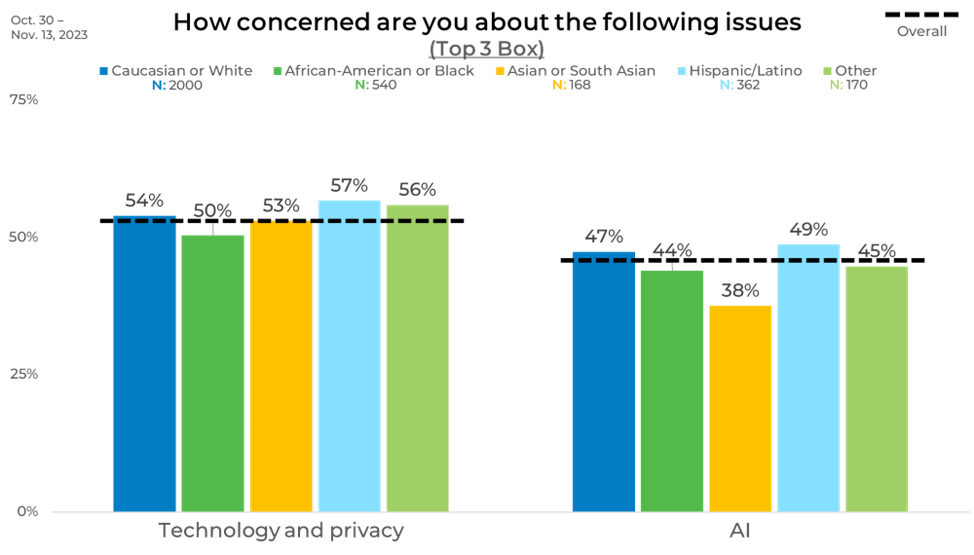
Region
The regional breakdown reveals distinct attitudes towards technology, privacy, and AI across the United States. Concerns about technology and privacy are highest in the West at 58%, followed by the Northeast at 55%.
For AI, the West leads again with 50% expressing high levels of concern, the Northeast follows at 47%, the Midwest at 45%, and the South at 44%.
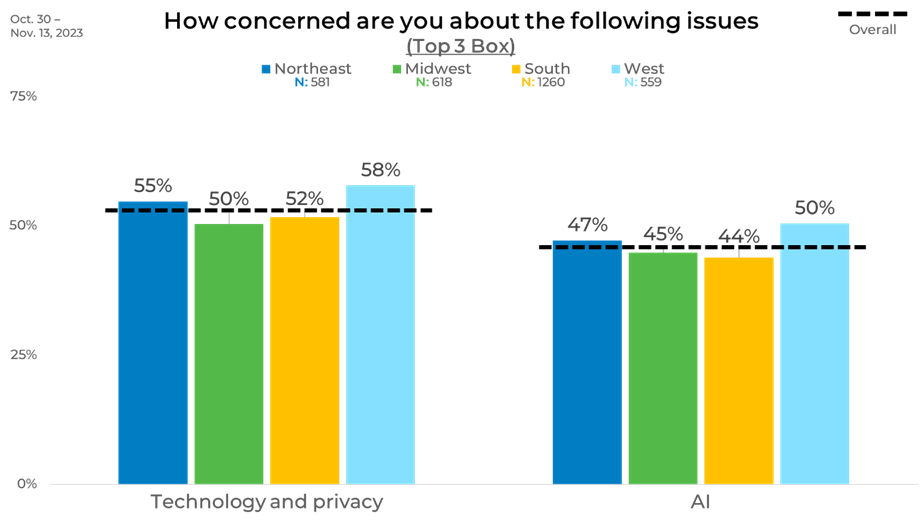
Panel
The panel breakdown for concerns about technology and privacy shows a notable disparity, particularly between Panels A and B. The high level of concern from respondents from Panel A is at 47%, the lowest among the groups, whereas Panel B reports the highest level of concern at 59%, a 12-percentage point difference.
For concerns about AI, the contrast between Panel D and Panel A is striking. Panel D exhibits the highest concern at 54%, compared to Panel A, which again shows the lowest concern at 40%. This significant 14 percentage point gap between the panels illustrates how panels differ from one another because of the behaviors and attitudes of panelists and how that can impact your data.

As you can see, awareness can vary significantly across demographics and by panel, impacting your data. That is why strategically blending sample is the best practice to ensure you are accounting for distributed demographic, as well as attitudinal and behavioral balance.
Learn more about our Strategic Sample Blending approach and why it is the premier methodology. Download our whitepaper today.




